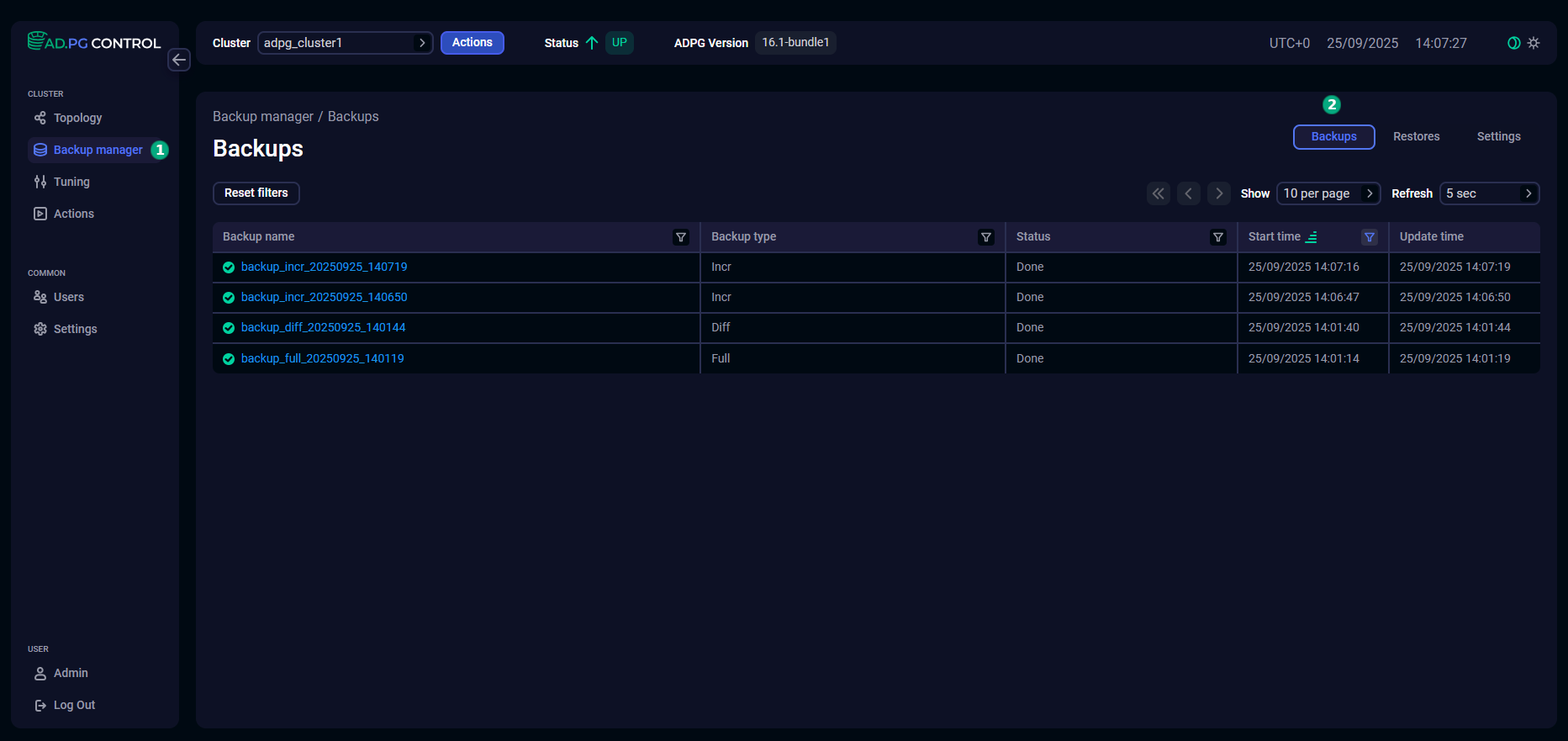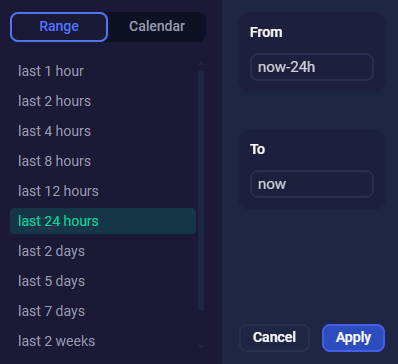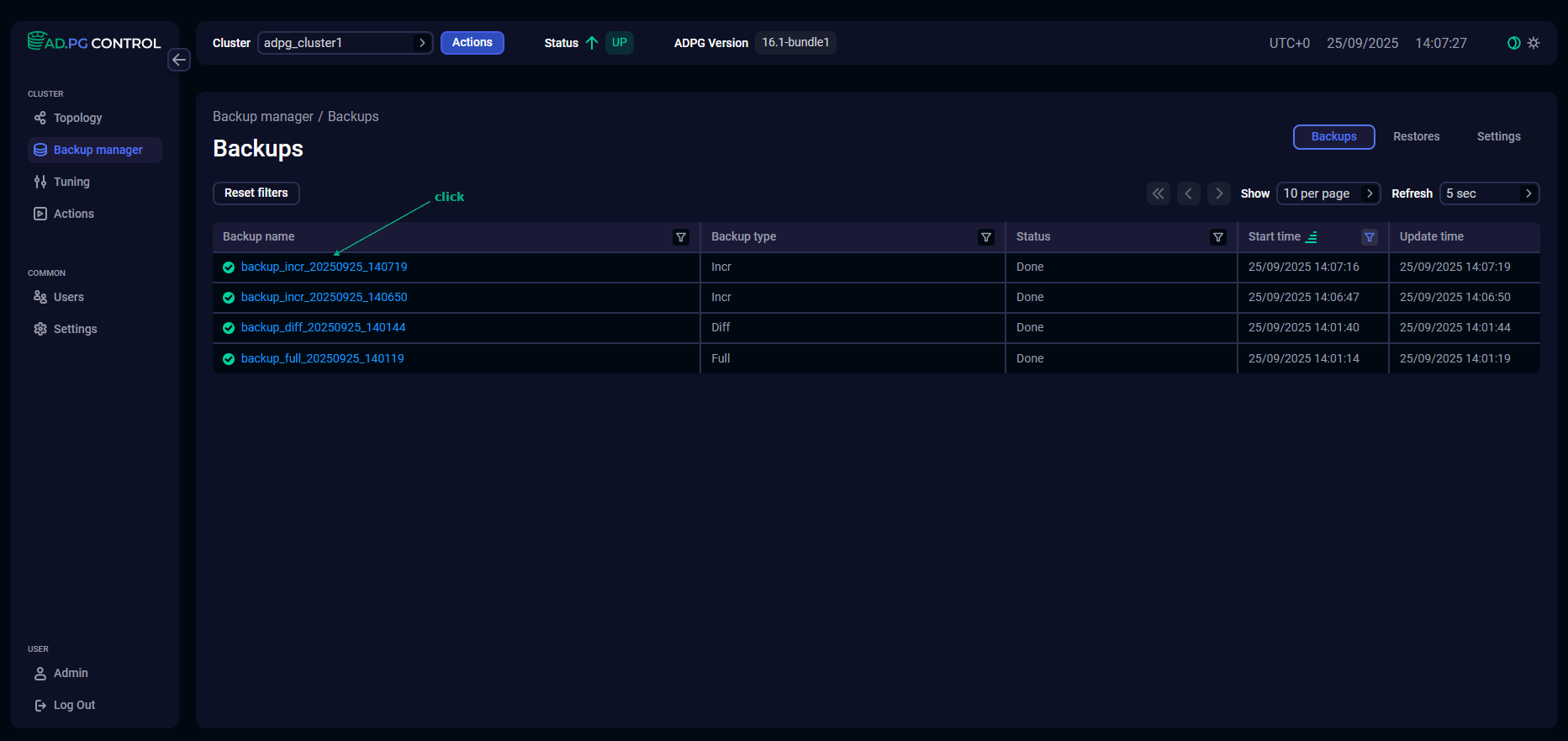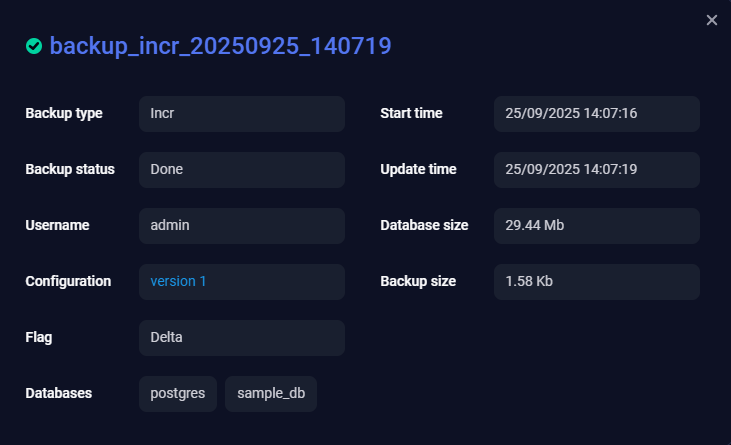

View backups
List of backups
Regardless of whether a backup is created manually or by schedule, any backup created in ADPG control is displayed on the Backups tab. To open this tab, go to the Backup manager page and click Backups.

The Backups tab contains a table with the fields listed below.
| Field | Description |
|---|---|
Backup name |
A backup name. It represents a link that allows you to open a window with backup details |
Backup type |
A backup type. Possible values are:
|
Status |
A backup status. Possible values:
|
Start time |
A start timestamp of the backup operation in the |
Update time |
A timestamp of the last backup status update in the |
In the column headers of the table with backups,
there are filters that you can use to select specific data. To open a filter, click the
icon. For the columns where the set of possible values is limited (for example, Status), you can select a value from the drop-down list.
For columns that show date and time (for example, Start time), the period of time can be selected from the list of predefined ranges or from a calendar.

The
icon means that a filter is defined for the column. To reset all filters, click Reset filters.

|
IMPORTANT
By default, the table on the Backups tab shows the backups created in the last twenty-four hours. To view all backups, use the time filters. |
Backup details
To view the backup details, click the backup name on the Backups tab.

The window with backup details will be opened.

The window contains the parameters listed in the table below.
| Field | Description |
|---|---|
Backup type |
A backup type. See Backup type above |
Backup status |
A backup status. See Status above |
Username |
A name of the user who performed the backup |
Configuration |
The configuration version that was used. You can click the version name to open the Configuration tab with specified parameters |
Flag |
Determines if the Delta flag was used. For more information on the flag, see the Backup action |
Databases |
User databases existing at the time the backup is created and that can be restored from it |
Start time |
A start timestamp of the backup operation in the |
Update time |
A timestamp of the last backup status update in the |
Database size |
The size of the databases that are included in the current backup and can be restored using all the necessary backups, including incremental, differential, full |
Backup size |
A size of the current backup |